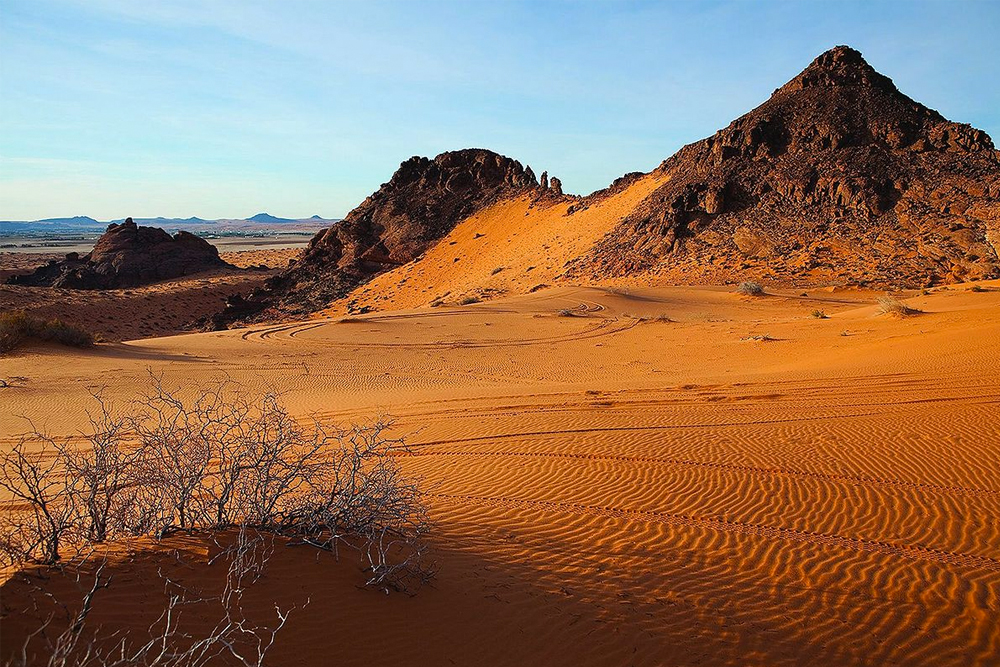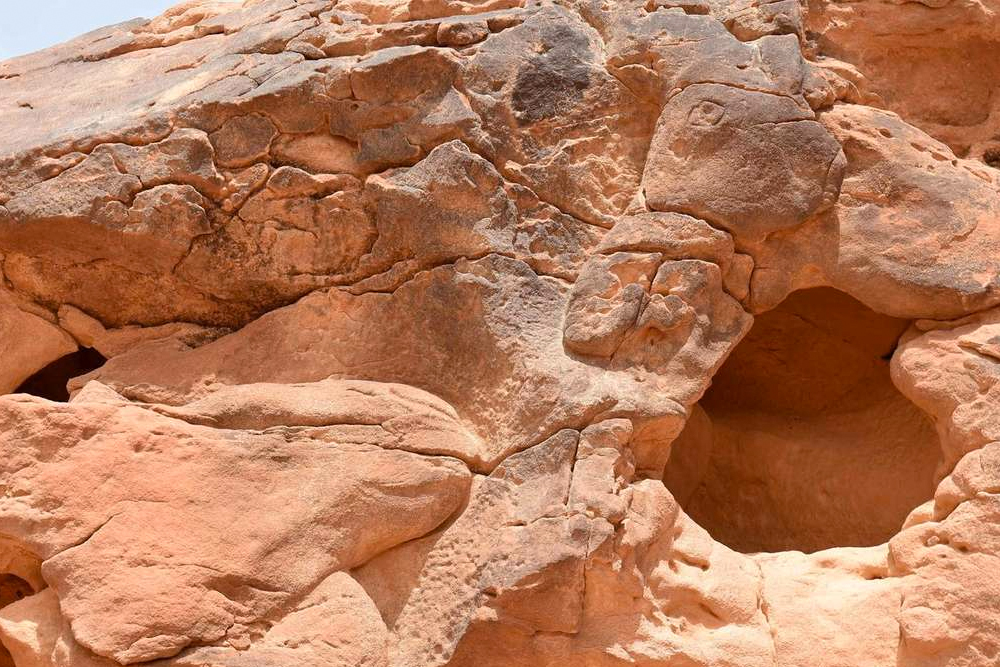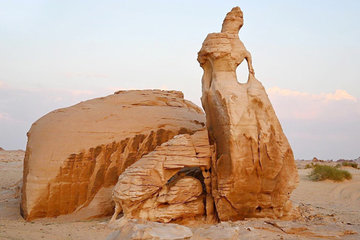
In the northwest region of Hail in Saudi Arabia is Jubbah, a city of some 20,000 residents, surrounded by the Nefud Desert and to some extent shrouded in mystery. Certainly if you look beyond its sands, dunes, and rock formations mountains and take a closer look at its surroundings, you may discover something to pique your curiosity: petroglyphs and inscriptions carved onto rocks. Archeologists believe that the historical sites in Jubbah may be as old as 10,000 years, and according to LonelyPlanet.com, the finest carvings in the area date from around 5500 BC, and there are also significant Thamudic inscriptions dating to 1000 BC.

The petroglyphs carved onto the rockfaces offer clues as to how people lived in the area at the time. Many of Jubbah’s carvings include depictions of people, camels, and horses and chariots, and what seems to be inscriptions from an ancient language. Some of the images directly hint at life in Jubbah’s past, from the kind of clothing and hairstyle worn, to hunting lifestyle, and diversity of wildlife. In addition, some of the very tools used to make the carvings have been discovered at these sites as well, giving more clues into the history of the area.
It is believed that Jubbah, which lies on the old caravan road between Najd and the eastern Mediterranean Sea, once had water and greenery supporting inhabitants. Saudi Arabia’s Tourism Guide explains that the oldest carvings in can be found on the sandstone formations of Jibal Umm Sinman, with many acting as a testimony “of a time when permanent lakes were watered by regular rainfalls, even on the edge of the Nafoud Al-Kebir.” Today, Jubbah is mostly abandoned due to desertification, with only the petroglyphs now serving as reminder of their once presence.

Jubbah’s archaeological sites are now recognized as UNESCO World Heritage sites, and with that comes great care in looking after them. If you ever want in visit these historic locations for yourself, you might need to be accompanied by an authorized tour guide, as the Saudi Commission for Tourism and National Heritage is currently limiting tourists in the area, protecting the sites with fences to avoid unintentional damages.

















